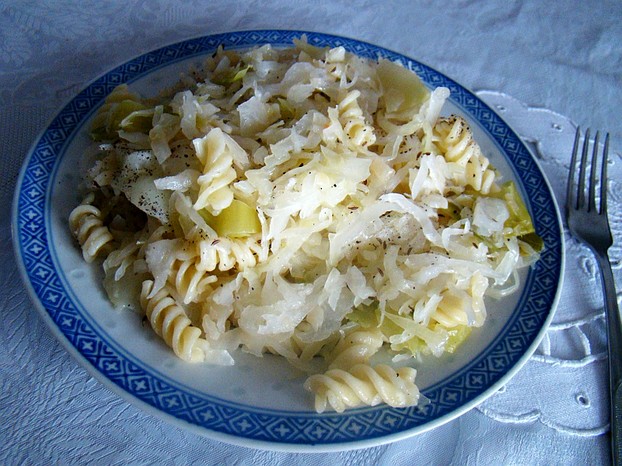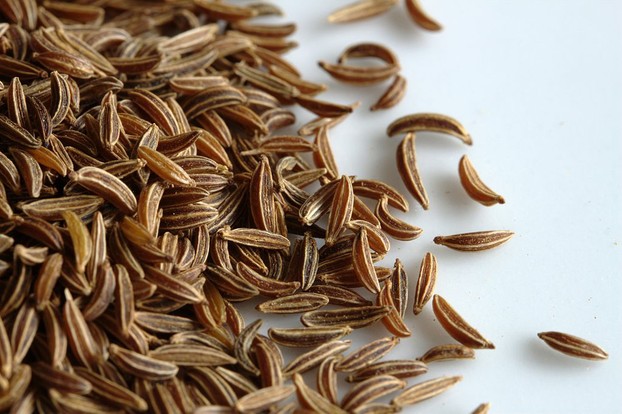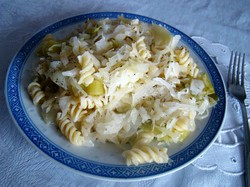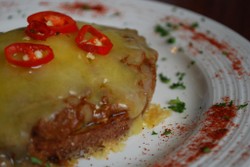A native of Eurasia and North Africa, caraway (Carum carvi) is a biennial plant in the carrot-celery-parsley family (Apiaceae). Biennials, which require two years to complete their biological life cycle, may be vernalized, that is, fast forwarded, to their flowering stage by way of exposure to extreme cold. Tinkering by gardeners in accordance with local climatic conditions includes treating caraway:
- as annuals when emphasizing their edible leaves and roots or
- as biennials when featuring their flowers, fruits, and/or seeds.
The spice known as caraway seeds is, in fact, the plant's fruits. Caraway seeds are renowned for their pungent, anise-like aroma and flavor, which functions as a natural breath refresher.
Caraway has universal appeal in world cuisines as a versatile contributor to an imaginative array of dishes, including breads, casseroles, cheeses, desserts, liqueurs, and rice and vegetable medleys.
- Caraway leaves, whether cooked or raw, enliven salads.
- Caraway roots substitute intriguingly for carrots in single ingredient recipes or in medleys such as casseroles.
- Favorite caraway recipes in my family entail sprinkling freshly ground caraway seeds in coffee, over ice cream, and in honeyed milk.
The partnership of cabbage and caraway is valued in Czech cuisine. The spice's treasured status is emphasized by its association with noodles, which are staples in Czech culinary history.










 Are Hawaiian Huakai Po Nightmarchers Avenging Halloween Thursday?on 10/02/2024
Are Hawaiian Huakai Po Nightmarchers Avenging Halloween Thursday?on 10/02/2024
 Mailing Addresses for 2023 Form 4868 Extending 1040 and 1040SR April 15, 2024, Due Dateon 04/15/2024
Mailing Addresses for 2023 Form 4868 Extending 1040 and 1040SR April 15, 2024, Due Dateon 04/15/2024
 Mailing Addresses for 2023 Forms 1040 and 1040SR Filed in 2024on 04/15/2024
Mailing Addresses for 2023 Forms 1040 and 1040SR Filed in 2024on 04/15/2024
 Mailing Addresses for 2022 Form 4868 Extending 1040 and 1040SR April 18, 2023, Due Dateon 04/13/2023
Mailing Addresses for 2022 Form 4868 Extending 1040 and 1040SR April 18, 2023, Due Dateon 04/13/2023



Comments
VioletteRose, Caraway seeds contribute a refreshing burst of flavor and texture to this recipe. Me, too, I like the combination of cabbage + noodles: they go well together.
I like the combination of cabbage and noodles, sounds delicious. The addition of caraway seeds would go great with it. Thanks for the recipe.